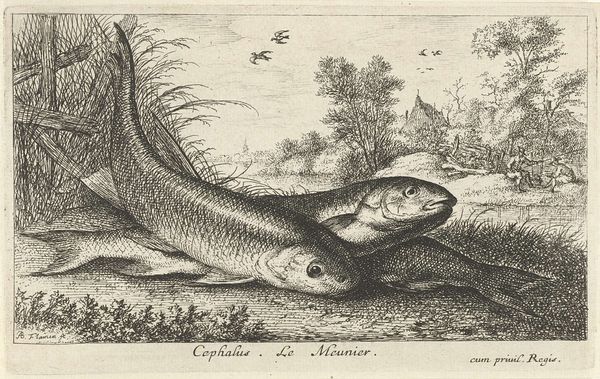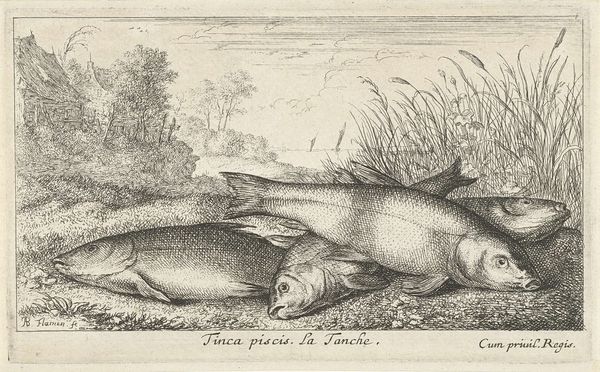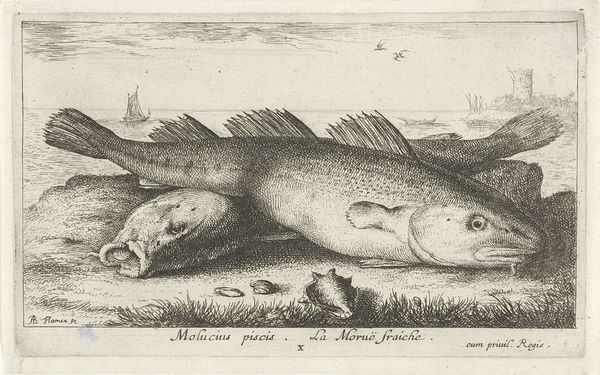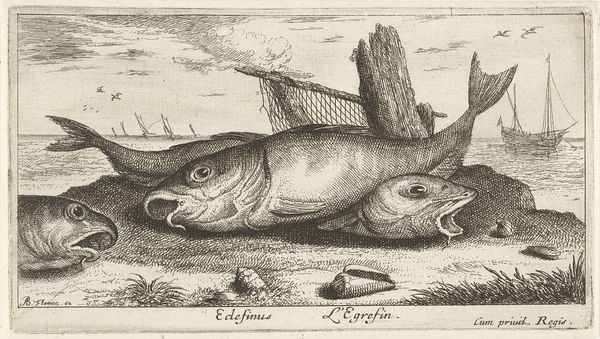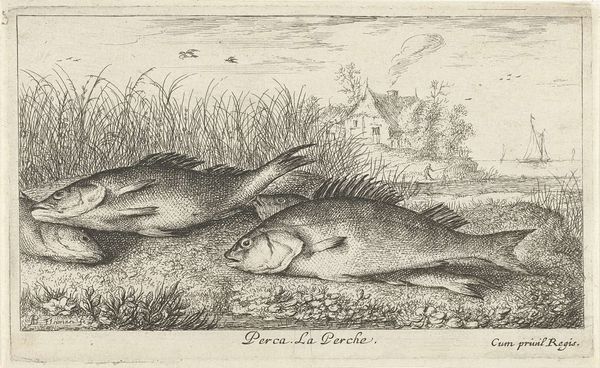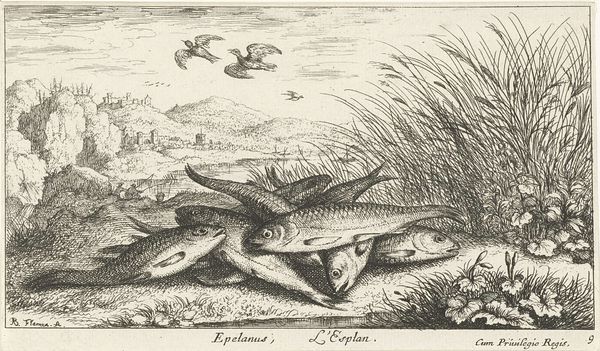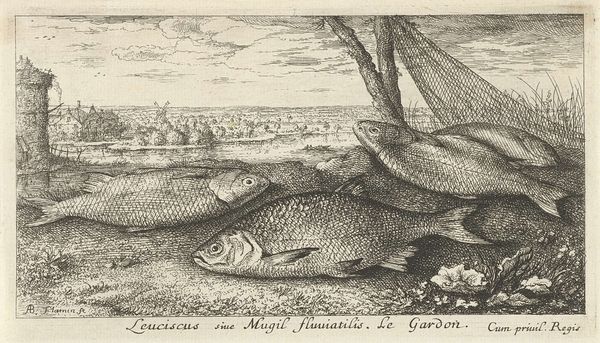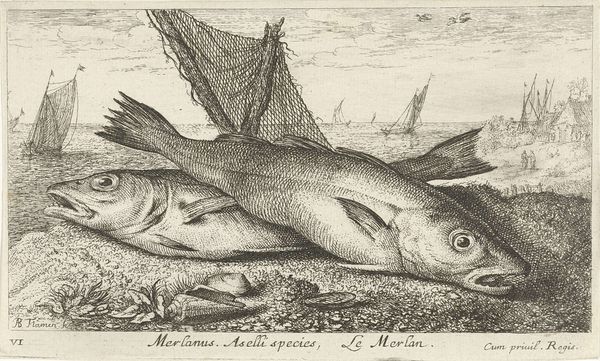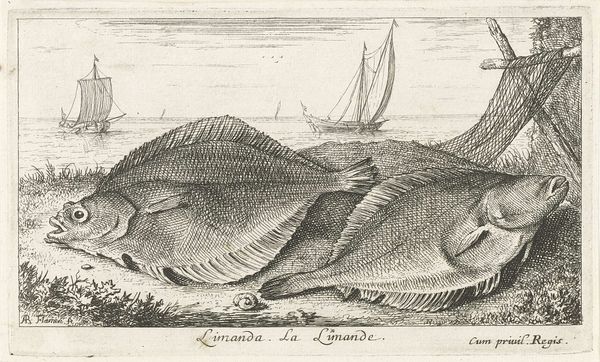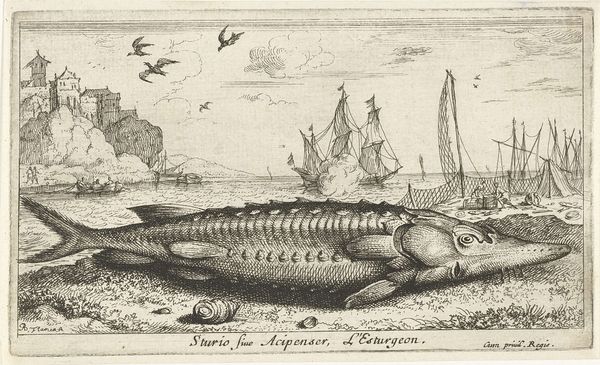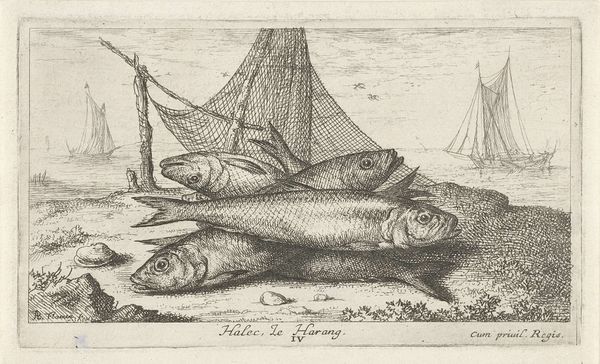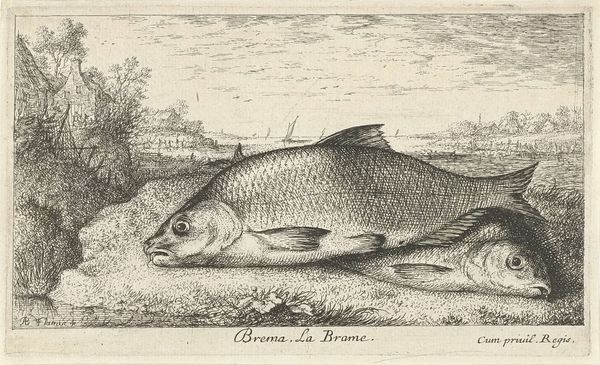
print, engraving
#
dutch-golden-age
# print
#
landscape
#
figuration
#
engraving
Dimensions: height 109 mm, width 175 mm
Copyright: Rijks Museum: Open Domain
This print of three fish on a riverbank was created by Albert Flamen sometime in the 17th century. Look closely, and you’ll see that the technique used here is etching, a printmaking process that relies on acid to ‘bite’ into a metal plate. The resulting lines, which hold the ink, can achieve remarkable detail, as seen in the scales of the fish. This wasn’t just a feat of manual skill. It required a deep understanding of the material properties of metal, acid, and paper. The landscape with fishing net and building in the background gives the piece a rich texture. The fish become a symbol, not only of nature, but of human labor and industry. Thinking about process helps us understand the cultural status of prints. They weren’t unique artworks, but multiples, part of an expanding visual culture, affordable and accessible. This etching provides insight into the way materials, techniques, and social context are all intertwined.
Comments
No comments
Be the first to comment and join the conversation on the ultimate creative platform.
